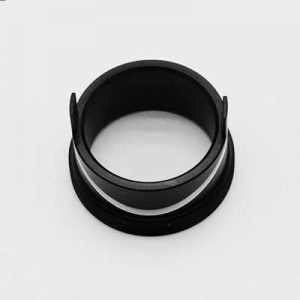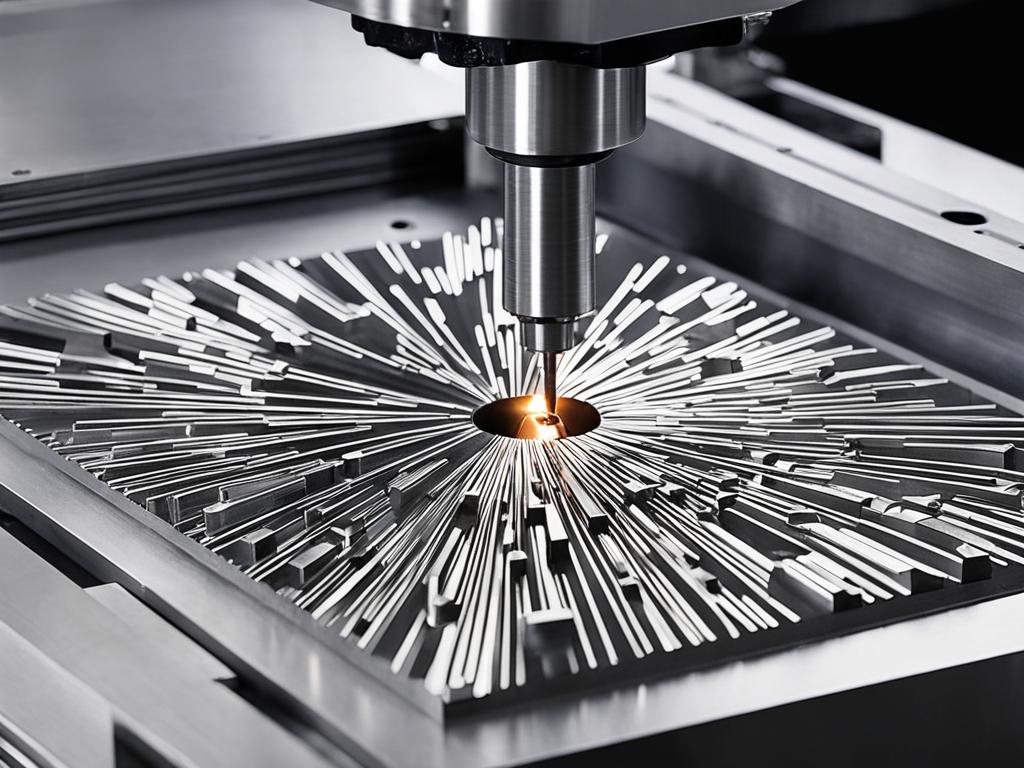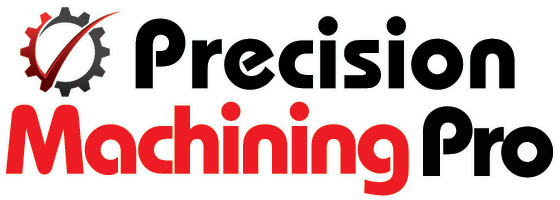But how much does CNC machining cost?
The cost of CNC (Computer Numerical Control) machining is determined by several factors, making it a complex process to estimate. The primary cost drivers include the complexity of the part being machined, the type of material used, the precision required, and the overall time taken for machining. Complex designs with intricate details demand more time and precision, which increases the cost. Materials also play a significant role; harder materials like titanium are more expensive to machine compared to softer ones like aluminum. The precision level required can significantly affect the cost as well, with tighter tolerances leading to higher expenses due to slower machining speeds and more sophisticated equipment.
Additionally, the volume of parts to be produced impacts the cost per unit. High-volume orders generally reduce the cost per piece due to economies of scale, whereas low-volume or one-off productions can be considerably more expensive. Setup costs, including the preparation of the CNC machine and the creation of custom tools or fixtures, are amortized over the number of parts produced, making larger runs more cost-effective. Other factors influencing the cost include the machine’s operating costs, including electricity and maintenance, labor costs, and any additional finishing processes required after machining. Due to these varying factors, CNC machining costs are typically calculated on a case-by-case basis, with quotes provided after a detailed review of the design specifications and production requirements.
In the article below we will examine the multitude of variables affecting CNC machining prices to understand the complex interplay of factors driving quotes. Once the key influences are explored, some typical ballpark figures provide reasonably accurate benchmarks subject to the specifics of a given CNC machining project.
We’ll break down the essentials of estimating CNC machining costs to make professional judgments equipped with knowledge of the critical determinants involved. Gain fundamental literacy around machining expenses to strategize budgets, assess quotes, and communicate effectively with manufacturing services. Let’s get to the bottom line of how much you can expect to pay.
Key Factors That Determine CNC Machining Costs
CNC machining costs primarily boil down to seven key factors:
- Design Complexity – Intricate parts with tight tolerances incur more programming, machining, and inspection expenses. Simpler designs save substantially.
- Material Choice – More difficult-to-machine materials like hardened steel cost much more than easier ones like aluminum. Exotic alloys can get very pricey in comparison.
- Machine Type – Advanced 5-axis CNC mills offer greater flexibility but have higher hourly rates than 3-axis variants.
- Volume – Amortizing setup costs over larger production runs leads to reduced per-unit expenses.
- Size – Larger material blocks utilize more raw material and machine capacity per part, increasing costs.
- Finishes – Added post-processing like polishing or coatings added extra steps and specialty services.
- Precision – Holding extremely tight tolerances requires sophisticated processes and quality assurance.
Now let’s explore each of these major influences on CNC machining costs in closer detail. Becoming familiar with what drives prices empowers smart decisions when planning manufacturing projects.
The Impact of Design Complexity on CNC Machining Cost
Arguably the most significant variable, design complexity directly impacts practically every aspect of the machining process from programming to quality assurance. Simply put, the more convoluted a part’s form and geometries, the more expensive it will be to CNC machines.
Complexity affects costs in several key ways:
- Programming Difficulty – Mazes of intricate 3D surfaces and geometries demand far more programming time to translate designs into machining code. Tough parts can take 10 times longer to program than simple ones.
- Machining Time – Intricate details require slower cutting speeds and specialty tooling to access tight spaces while holding tight dimensional tolerances. More complex equals longer machine run times.
- Machine Type – Hard-to-reach contours often necessitate advanced 5-axis CNC mills with swiveling heads offering a greater range of motion compared to standard 3-axis machines. And with 5-axis machines typically billing $100-200 per hour compared to $50-100 per hour for simpler 3-axis variants, costs add up quickly.
- Inspection Difficulty – With convoluted 3D geometry tolerances accumulating in complicated ways, confirming specifications are held requires extensive inspection increasing quality assurance expenses.
Design intricacy directly impacts costs across nearly every workflow element. Want to save on CNC machining? Simplify parts whenever viable by reducing unnecessary details. Let’s look at a few examples demonstrating cost differences:
- A basic aluminum instrument housing with simple external forms and mounts might cost as little as $500 setup plus $5 per unit in medium quantities.
- An intricately styled aerospace titanium structural bracket with complex integrated attachments and major internal voids could run $5,000 setup and $500 per unit.
- A plastic consumer product enclosure with sweeping curves but commoditized design motifs might fall around $1,500 setup plus $25 per unit.
- A specially engineered Swiss watch chassis component formed from hardened stainless steel with microDrive pinions and delicate features could hit $10,000 setup with $2,000+ unit costs.
As these hypothetical examples illustrate, design intricacy plays an outsized role in driving CNC machining expenses.
Let’s now examine another crucial aspect: material selection.
Material Choice Significantly Impacts Machining Costs
The type of CNC machining material utilized inherently influences multiple variables affecting manufacturing difficulty including hardness, tool wear rates, cutting speeds, surface finishes, tendency to warp, and more. Thus material choice directly contributes to bottom-line part costs.
Generally speaking, working metals like aluminum and mild steel offer the most cost-effective CNC machining options while hard alloys like tool steel and titanium quickly escalate pricing. Exotic super alloys popular in aerospace applications can get extremely spendy. Manufacturing plastics via CNC ranks on the low end for material expenses but still varies substantially based on properties.
Here’s a brief overview of common material pricing tiers for CNC machined components ranked from least to most expensive:
Low-Cost CNC Machining Materials
- Plastics – Broadly used across industries offering lightweight, low friction, and electrical insulation properties while keeping machining costs affordable.
- Aluminum – Very machinable metals often prescribed for aviation, automotive, and consumer product applications. Softer grades like 6061 aluminum are especially cost-effective options.
- Mild Carbon Steels – The jack-of-all-trade metals offering a balanced mix of strength, toughness, and machinability at moderate price points. 1018 cold rolled steel is a go-to choice.
Moderately Priced CNC Machining Materials
- Stainless Steel – Corrosion-resistant steel alloys with decent strength are frequently used for industrial components, marine hardware, medical instruments, and the like. 304 stainless a common selection.
- Brass – Attractive gold-toned alloys integrating copper and zinc provide enhanced lubricity and wear resistance compared to steel, albeit at a higher cost.
More Expensive CNC Machining Materials
- Titanium – Incredibly strong, ultralight aerospace alloy renowned for corrosion resistance but notoriously tedious to cut. Difficult tooling causes high material expenses.
- Inconel Nickel Alloys – Extremely heat tolerant super alloys able to withstand scorching temperatures making them popular for jet engines and exhaust components. Costly and challenging to machine.
- Tool Steel – Ultra hard metals treated to very high hardness levels giving exceptional wear resistance. Requires special cutting considerations adding great expense.
Costly Specialty CNC Machining Materials
- Composites – Space age mixes of exotic metal, ceramic, or carbon fiber materials engineered for highly specialized applications. Requires specialty machining knowledge.
- Costs a Premium!
Keep material expenses in perspective when planning CNC machining projects and always question if premium alloys are necessary for an application when more affordable alternatives may suffice.
Now let’s examine machine types.

Comparing CNC Machine Hourly Rates
With hourly machine prices directly contributing to project costs, the variety of CNC machines selected significantly sways budgets. Advanced 5-axis CNC mills provide exceptional flexibility to access complex part geometries from a wide range of angles but have much steeper hourly rates compared to entry-level 3-axis machines more limited in the diversity of forms they can create.
Here’s an overview of average hourly operating costs for common CNC machine tools with all factors accounted for according to research from Wolfe Precision:
- 3-Axis CNC Mill – $65 per hour
- 4-Axis CNC Mill – $95 per hour
- 5-Axis CNC Mill – $130 per hour
- CNC Turning Center – $65 per hour
- CNC Router – $60 per hour
- CNC Laser Cutter – $100 per hour
As a general guideline when estimating CNC machining costs:
- 3-Axis Machines – Offer faster lead times and the most affordable rates for low to moderately complex parts. Ideal for basic prismatic geometries.
- 5-Axis Machines – Enable cutting complex contoured shapes with undercuts not possible on lesser-axis equipment. Best suited for highly complex components. Hourly rate premiums add up quickly for long-run jobs.
- Turning Centers – Specialized for concentrically machined components with rotating part symmetry like motor shafts. Limited flexibility but very fast production.
Always match machine capabilities closely to part complexity to control expenses. Now let’s see how economies of scale enter the equation.
Order Volume Significantly Impacts Per Unit Costs
How many parts are required is a prime factor for CNC machining costs due to economies of scale principles. Setup expenses including programming, fixturing, tooling preparation, and process development get amortized over the total number of units machined.
Therefore per piece costs decrease significantly with higher production volume as those fixed costs get diluted. Meanwhile, marginal material expenses per additional part remain minimal keeping budget allocations quite lean.
Let’s examine a hypothetical scenario demonstrating the drastic price difference between a one-off prototype run compared to volume production of 10,000 units:
- Prototype Batch – 5x units
- Setup Costs – $1,500
- Unit Costs – $300
- Total Expense – $2,500
- 10,000 Unit Production
- Setup Costs – $1,500
- Unit Costs – $25
- Total Expense – $27,500
For only a $1,000 premium in setup costs, the 10,000 unit run reduced per unit pricing down a whopping 88% to $25 each gaining huge savings from economies of machining scale.
Now consider even greater production volumes in the hundreds of thousands of units would amortize costs even further. This allows very affordably priced high-volume consumer goods to integrate CNC machined components during manufacturing.
Let’s examine part size effects.
Part Physical Size Impacts Material Sourcing Expenses
The sheer physical size and weight of project materials also decrease costs for CNC machining high volumes. Larger material blocks cost significantly more per pound compared to smaller sizes. So optimizing efficient “nesting” of parts to minimize required material blank dimensions offers huge savings at scale.
Let’s run the simple math on material costs:
- 4′′ x 4′′ x 2′′ aluminum block – $5 per block
- 10′′ x 10′′ x 5′′ aluminum block – $75 per block
If 1,000 units are required, the larger block size is 15X more expensive resulting in a major budget increase of $70,000!
By efficiently arranging parts for optimal blank utilization, a process called block optimization, groups of components can be strategically oriented to minimize material needs. The blended result nets far more affordable pricing with prudent planning.
As part sizes grow, material sourcing rightfully deserves greater scrutiny during design reviews. Identify any block dimension “budget busters” early when alterations cost less.
Now that we’ve established awareness of how physical part proportions move budgets, let’s factor in finishing options.
Supplementary Machining Services Add Cost
Many components require additional finishing work beyond cutting raw materials to achieve dimensional accuracy or enhance surface properties. These supplementary services tack on extra operational steps influencing total project costs.
Here are some common finishing processes with relative price levels based on added time, operational complexity, equipment demands, and material considerations:
Basic Finishes
- Benchwork – Manual sanding, filing, and polishing ($50 – $300 per hour)
- Media Blasting – Streamlined preparation for painting or powder coating ($100 – $300 per hour)
- Tumbling/Vibratory Deburring – Bulk surface polishing ($150 – $600 per load)
Intermediate Finishes
- CNC Deburring & Radiusing – Precision machined edge rounding ($65 – $95 per CNC hour)
- Passivation – Improved corrosion resistance for stainless steel ($100 – $500 per load)
- Impingement Grinding – High volume precision surface polishing ($300 – $1,000 per hour)
Advanced Finishes

- Anodization – Colorized protective aluminum oxide layer ($5 – $20 per square foot)
- Powder Coating – Durable colored paint coating ($100 – $300 setup plus $5+ per color)
- Plating – Electrochemical metallic coating application like chrome, zinc or nickel ($300 – $2,000 setup plus $10 per square foot)
As this overview clarifies, finishing steps vary widely in scope and pricing. Avoid unnecessary frills beyond core accuracy requirements wherever viable to control budgets.
Now as we near wrapping up this full breakdown, what do all these individual factors mean for bottom-line job cost estimates? Check out the next section for realistic figures.
Typical Total CNC Machining Cost Ranges
Crunching together all the preceding influences explored, realistic ballpark estimates for sample CNC machined parts generally fall within the following ranges:
Simple Parts
- Precision-machined basic shapes in common metals or plastics
- 3-axis milling with minimal finishing
- Small to medium sizes up to 12′′ x 6′′ x 6′′
- Cost Range – $500 – $5,000
Average Parts
- Moderately complex components combining common and specialty metals
- May involve EDM, turning, tapping, or light finishing steps
- Medium to large part sizes up to 24′′ x 18′′ x 12′′
- Cost Range – $1,500 – $15,000
Complex Parts
- Intricate housings, manifolds, or preproduction prototypes
- Tight tolerance 5-axis surfacing with specialty metals and finishes
- Small to medium envelope dimensions
- Cost Range – $5,000 – $50,000+

Keep in mind these general CNC machining prices for sample part categories provide only very loose ballpark figures subject to many variables explored above. Quoting specialists factors all influencing specifics of a project to tailor accurate job costing analysis.
Nonetheless, having tangible anchors for budgetary awareness still provides helpful general guidance when embarking on planning.
Now that we’ve built familiarity with the essential cost factors and typical pricing ranges for CNC machined components, let’s conclude with actionable key takeaways:
Key Takeaways on Controlling CNC Machining Costs
- Embrace Simpler Designs – Eliminate unnecessary complex geometries and details that unnecessarily inflate programming and machining time whenever feasible. Deliberate simplification choices reap significant savings.
- Consider Affordable Material Alternatives – Research if premium materials demanded are necessary for an application or if more economical substitutes may suffice given careful property considerations.
- Take Advantage of Economies of Scale – Identify opportunities to consolidate multiple components into higher volume production whenever viable, even across projects or clients. Amortizing setup costs over larger quantities drastically reduces per-unit pricing.
- Minimize Material Blank Size Requirements – Orient all components efficiently within material blocks and stock plates through intentional nesting optimization to fully leverage each sourced piece.
- Standardize on Lower Complexity Processes – Seek ways to design parts producible on affordable 3-axis CNC mills before resorting to premium 5-axis equipment with steep hourly rates only when truly essential.
- Eliminate Unnecessary Finishing Upgrades – Avoid superficial custom finishes that fail to enhance functionality. Often standard machined finishes already meet technical benchmarks just fine without fancy frills that inflate budgets.
Making informed design and manufacturing choices with budget implications in clear perspective enables strategically balancing performance and cost factors for an ideal intersection of value.
Connect with a Machining Expert for Professional Guidance
Now that you’ve got core awareness of the essential factors influencing CNC machining costs, partnering with an experienced manufacturing engineer early in design processes helps steer prudent choices balancing performance and budget.
Precision Machining Pro offers world-class machining expertise across a tremendous range of production and prototype projects. Get in touch for professional guidance tailoring high-value precision CNC solutions meeting your exact technical specifications and budget goals.

FAQs About CNC Machining Costs
Q1: How does material selection affect CNC machining costs?
Material selection plays a significant role in CNC machining costs.
Different materials like wood, plastic, aluminum, and steel have varying costs and properties that influence machining costs.
Material choice impacts factors such as tool wear, cutting speeds, and tooling requirements.
Q2: How does design complexity affect CNC machining costs?
Design complexity directly impacts CNC machining costs.
More intricate designs can increase programming and machining time, leading to higher costs.
Specific design elements can affect these costs.
Q3: Is there a relationship between the order volume and CNC machining costs?
Yes, there is a relationship between order volume and CNC machining costs.
Larger orders often benefit from economies of scale, resulting in lower per-unit costs.
Q4: What are the main types of CNC machines, and how do they affect costs?
The two main types of CNC machines are 3-axis and multi-axis machines.
The choice of machine type can impact machining costs also their respective capabilities and limitations.
Q5: How does the size of the material affect CNC machining costs?
The size of the material can significantly influence CNC machining costs.
Larger materials may require more machining time and can lead to waste.
Optimizing material usage to reduce costs we offer tips for efficient material block usage.
Q6: What role do finishing options play in CNC machining costs?
Finishing options, such as high polishing or galvanization, can add to CNC machining costs.
Different finishes affect costs so it is important to know the selection of finishes wisely based on project requirements.



